
A foodies’ guide to South Africa
From bunny chow and bobotie to the barbecued delights of the braai, there are more than a few hidden gems in South Africa’s diverse cuisine.
It might be known for its wildlife-rich national parks and safari escapes, but South Africa’s culinary scene is every bit as impressive and certainly makes it worth a visit. While certain products are becoming staples of the supermarket shelves back home – boerewors and biltong spring to mind – there’s plenty of authentic South African fare which might be a bit more unfamiliar. That being said, these foods promise unique flavours and deserve to be tried at least once.
Whether you regularly explore Africa or are a newcomer to this extraordinary part of the world, you’ll find a feast of sumptuous local fare available between excursions. From Cape Town’s Malay curry to the local delicacies of the East, nowhere really does these dishes quite like South Africa. If you’d like a sweet treat, courtesy of the Cape, why not also try our malva pudding recipe?
Bunny chow, Durban
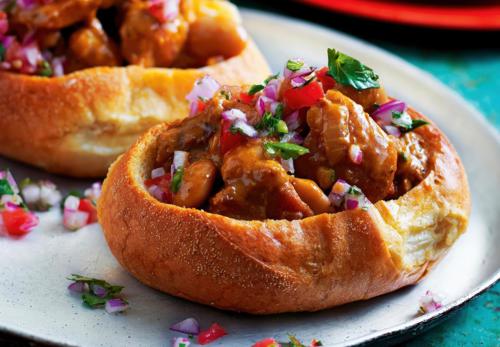
Born of Durban’s thriving South Indian population, this hearty dish is traditionally served in a hollowed-out bread bowl and is bursting with fragrance and flavour. Varying from mild to fairly spicy, bunny chow was originally a working-class meal and made the most of cheaper cuts of mutton and lamb. Nowadays, though, you’ll find a wide variety of ‘bunnies’ comprising anything from chicken to beans and root vegetables. No matter the choice of filling, this warming fusion food is sure to put a smile on your face.
Bobotie, Cape Town
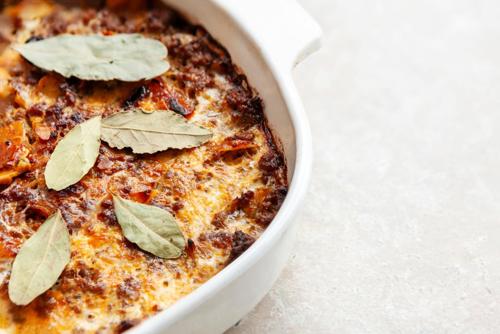
In keeping with Cape Town’s cosmopolitan nature, one of its most popular dishes, bobotie, is a wonderful combination of Indonesian and Dutch influences. Comprising spiced beef mince, dried fruits and a rich egg custard topping, it’s unlike anything you’ll find in Europe. Sweet, zingy and delightfully decadent, this recipe embodies South Africa’s Cape heritage and is seen by many as its de facto national food. For a truly authentic taste of Cape cuisine, enjoy bobotie with some Indonesian sambal.
Cape Malay curry, Cape Town
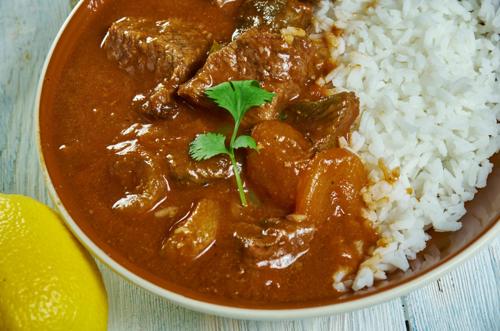
Another of Cape Town’s Asian-inspired delights, the Cape Malay curry boasts a complex flavour profile filled with aromatic spices, tender meat and a mild sauce. Another import of Cape Town’s Dutch colonial past, this recipe was originally brought over to South Africa by trader ships passing between the Netherlands’ East Asian outposts and has been a staple of the city’s cuisine ever since. Tangy, mild and incredibly flavoursome, this is a great choice to refuel on after a busy day’s excursion around the Western Cape.
Biltong, The Western Cape
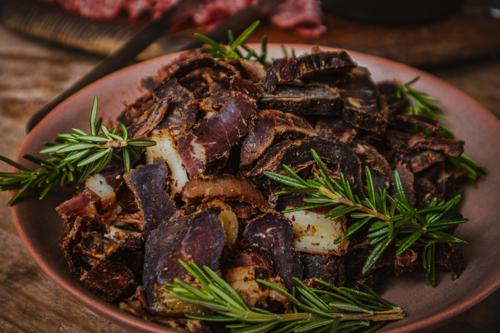
A safari staple, biltong is a popular snack which is similar to other cured meats such as American beef jerky and Italian bresaola. This hardy food was first produced to offer voortrekkers (Dutch settlers) a long-lasting and easily packaged source of meat as they moved eastward across the wild Cape terrain. Today, its unique flavour profile and texture have made it a favourite snack for city dwellers and safari-goers alike.
"With the sun dipping over the savannah, a strip of biltong in one hand and an ice-cold beer or crisp glass of wine in the other, it’s the perfect sundowner during a safari in the South African bush."
Kelly-Anne, Lead of Copy and Communications
Chakalaka and pap, Johannesburg

This vibrant side dish is a common feature amongst the braais of Johannesburg and pairs well with richer foods like steak, boerewors (spiced beef sausage) and braaibroodjies (cheese toasties). Chakalaka, a spiced bean and vegetable relish, is bright and fragrant, while pap, a type of cornmeal porridge, is an ideal accompaniment for the bolder flavours. Be sure to pair your plate with other elements of a traditional braai, and perhaps a glass of one of South Africa’s exquisite local wines, for an authentic tasting experience!
Get a taste of South Africa with our malva pudding recipe
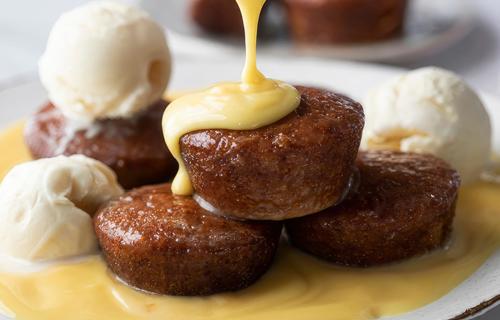
What you’ll need:
For the sponge:
- 150g plain flour
- 1½ tsp bicarbonate of soda
- A good pinch of salt
- 150g light brown sugar
- 75g caster sugar
- 30g apricot jam
- 2 large eggs
- 200ml milk
- 50g butter (melted)
- 1 tbsp white wine vinegar
For the syrup:
- 200ml double cream
- 100ml milk
- 150g caster sugar
- 75g butter
- 75ml water
- 3-4 drops vanilla essence
What to do
- Preheat your oven to 180ºC/Gas mark 4 and line your baking dish with greaseproof paper.
- Melt your butter in the microwave/on the stove and leave to cool slightly while you prepare the other ingredients. Combine your apricot jam, sugars (caster and demerara) and eggs in a bowl until you’re left with a light and smooth mixture. Next, sift your flour and bicarbonate of soda into a separate bowl and make a well in the middle.
- Once your butter has cooled a little, combine it with the milk and white wine vinegar, thoroughly stir it as you do. Mix your wet ingredients together and gradually add it to the well in the middle of your dry ingredients, stirring as you do so, until all ingredients are fully combined.
- Pour the batter into your lined ovenproof dish and bake for 40 minutes. The sponge should be brown (don’t worry if it’s getting quite dark around the edges!) and springy to the touch. Poke it in the centre with a knife or skewer and it should come out clean. If the pudding needs a little more time to cook, cover with tin foil and return to the oven for another 10 minutes.
- Combine all of your sauce ingredients in a pan and bring to a boil. Simmer for another 2 or 3 minutes until the sauce is a rich brown colour. Prick the top of your pudding with a fork and slowly drizzle over the caramel sauce, allowing it to soak into the cake.
- Leave to cool for a few minutes and serve warm with a scoop of vanilla ice cream and some fresh mint.






